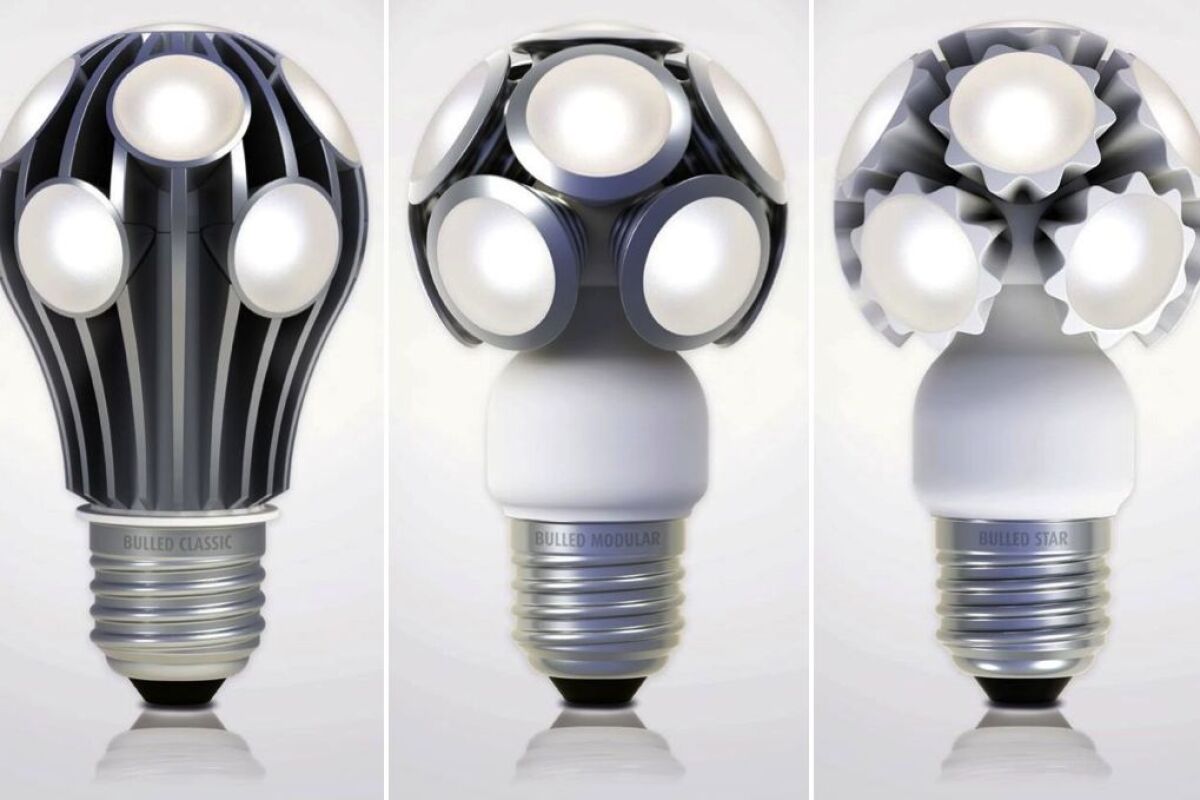LEDs last far longer than incandescent bulbs, are much more energy-efficient, and contain less toxic substances. Compact fluorescents give them a run for their money in some areas, although LEDs tend to have a warmer, "nicer" light. In the past few years, a number of companies have started marketing LED light fixtures that screw into traditional incandescent receptacles - these have included products from Geobulb, Switch, GE and Sharp. A new arrival, however is the Bulled line of "bulbs" (for lack of a better word), from German manufacturer LEDO. If nothing else, they definitely have a look of their own.
There are three models within the Bulled lineup. All of them incorporate a cluster of 11 CREE LEDs, use 11 watts of electricity, and mimic the shape and luminosity of a conventional 60-watt bulb. They provide 330 degrees of omnidirectional light, at a warm color temperature of 2800º Kelvin. They're also dimmable, reportedly use up to 85 percent less electricity than their incandescent equivalents, and are good for 80,000 hours of use, or approximately 80 years (given an average of three hours' use per day).
The Classic model features aluminum cooling fins, that draw heat away from the LEDs using a heat sink effect. The Modular model, by contrast, forgoes the long fins, instead using "fin cones" built into the base of each LED - these are said to act as mini air ducts, guiding a cooling current of air around and between the LEDs.

Finally, the Star model appropriately enough features star-shaped LED diffuser caps, which are said to provide exceptionally even illumination. Also, unlike its two mainly-aluminum siblings, it is instead made from a "high-tech combination of synthetic materials," which is said to be very heat-conductive.
So far, the Bulled bulbs are only available from three European distributors, which are listed under FAQ on the LEDO website. Each model sells for EUR99 (US$134).
Source: Designboom










